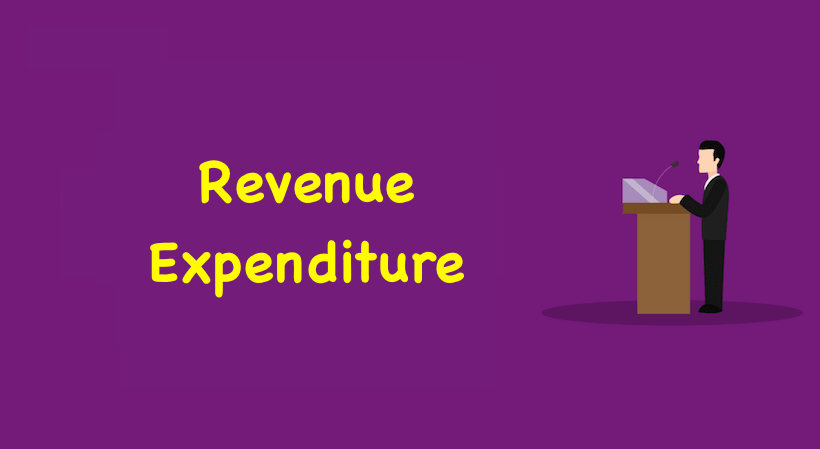Revenue Expenditure: Expenses whose benefit expires within the year of expenditure and which are incurred to maintain the earning capacity of existing assets are termed as revenue expenditure. Amounts paid for wages, salary, carriage of goods, repairs, rent and interest, etc., are examples of revenue-expenditure. Depreciation on fixed assets is also a revenue-expenditure. To the extent the materials are used up, they will be revenue expenditure. Similarly, cost of goods sold is revenue expenditure. Costs incurred to acquire an asset are capital but costs incurred to keep them in working condition or to defend their ownership are revenue. Fee paid to a lawyer for checking whether all the papers are in order before land is purchased is capital expenditure. But if later a suit is filed against the purchaser, the legal costs will be of revenue type.
This represents expenditure incurred to earn revenue of the current period. The benefits of revenue expenses get exhausted in the year of the incurrence. e.g. repairs, insurance, salary & wages to employees, travel etc. The revenue-expenditure results in reduction in profit or surplus. It forms part of the Income statement.
Revenue Expenditure
Revenue expenditure is expenditure incurred in the running/management of the business. For example, the cost of petrol or diesel for cars is revenue expenditure. Other revenue expenditure:
- Maintenance of Fixed Assets;
- Administration of the business;
- Selling and distribution expenses
Rules for Determining Revenue Expenditure
Any expenditure which cannot be recognised as capital expenditure can be termed as revenue-expenditure. A revenue expenditure temporarily influences only the profit earning capacity of the business. An expenditure is recognised as revenue when it is incurred for the following purposes:
Advertisement
Expenditure for day-to-day conduct of the business, the benefits of which last less than one year. Examples are wages of workmen, interest on borrowed capital, rent, selling expenses, and so on.
Expenditure on consumable items, on goods and services for resale either in their original or improved form. Examples are purchases of raw materials, office stationery, and the like. At the end of the year, there may be some revenue items (stock, stationery, etc.) still in hand. These are generally passed over to the next year though they were acquired in the previous year.
Expenditures incurred for maintaining fixed assets in working order. For example, repairs, renewals and depreciation.
Some examples of revenue expenditure
- (i) Salaries and wages paid to the employees;
- (ii) Rent and rates for the factory or office premises;
- (iii) Depreciation on plant and machinery;
- (iv) Consumable stores;
- (v) Inventory of raw materials, work-in-progress and finished goods;
- (vi) Insurance premium;
- (vii) Taxes and legal expenses; and
- (viii) Miscellaneous expenses.
Recommended
